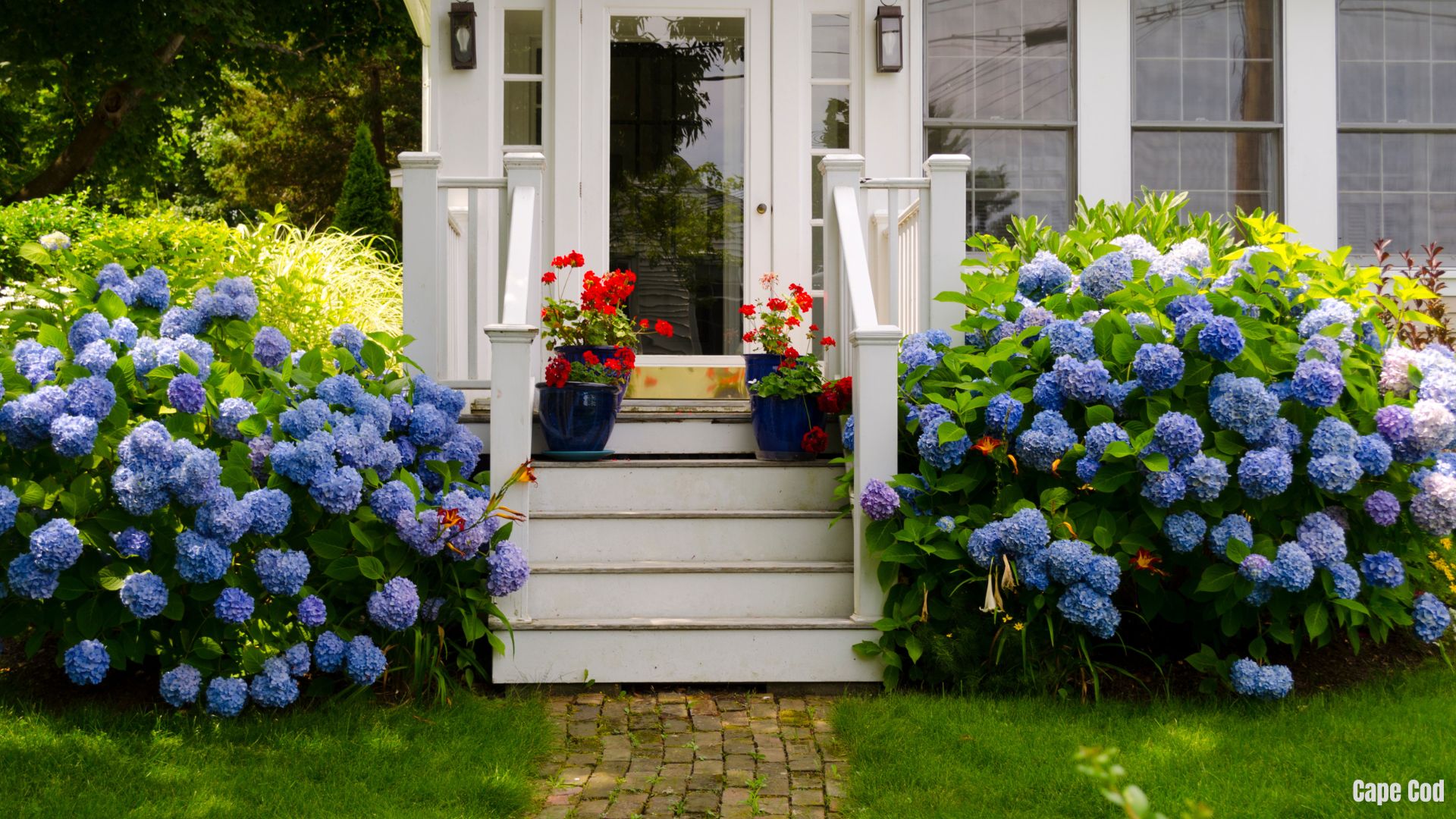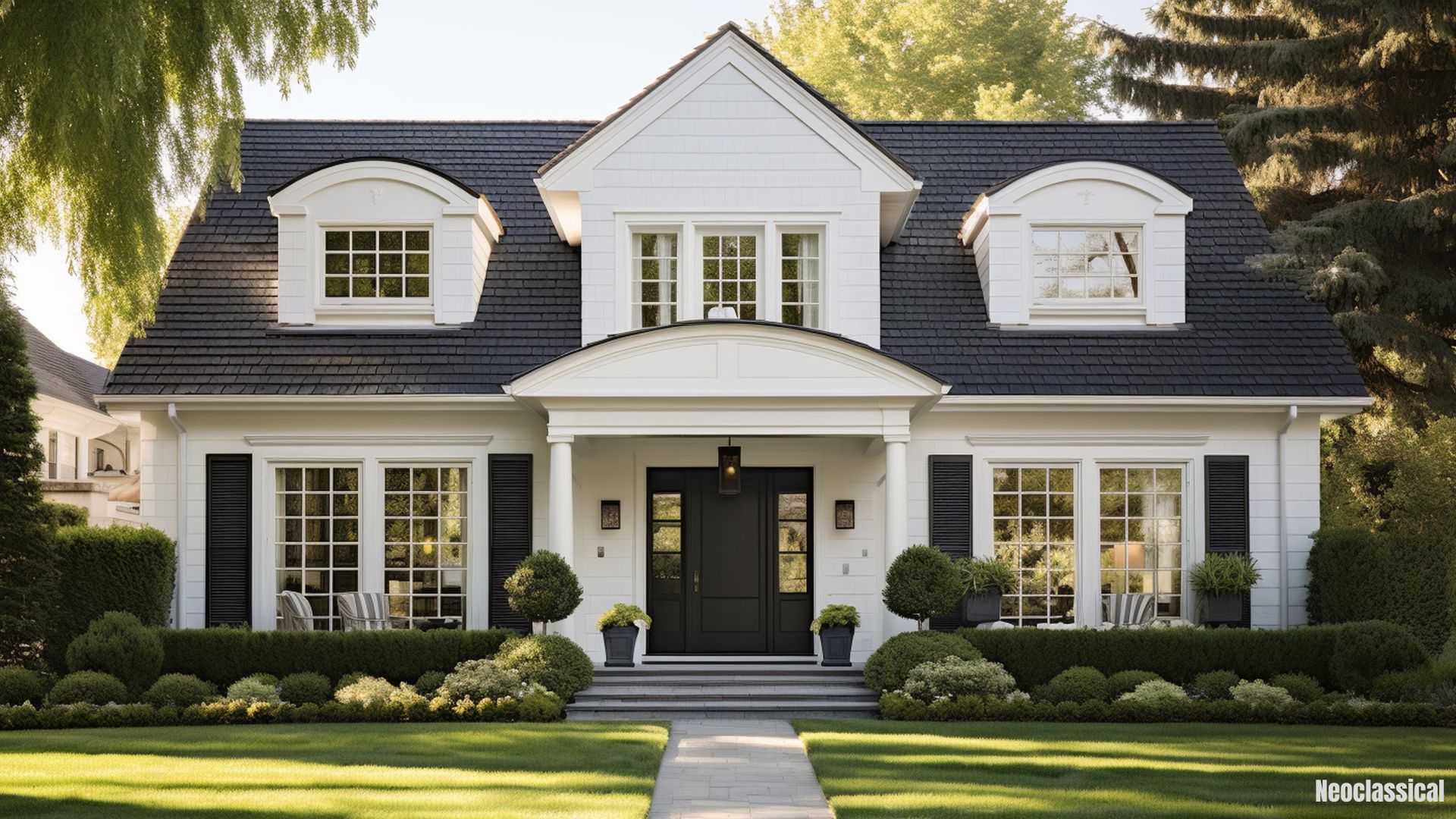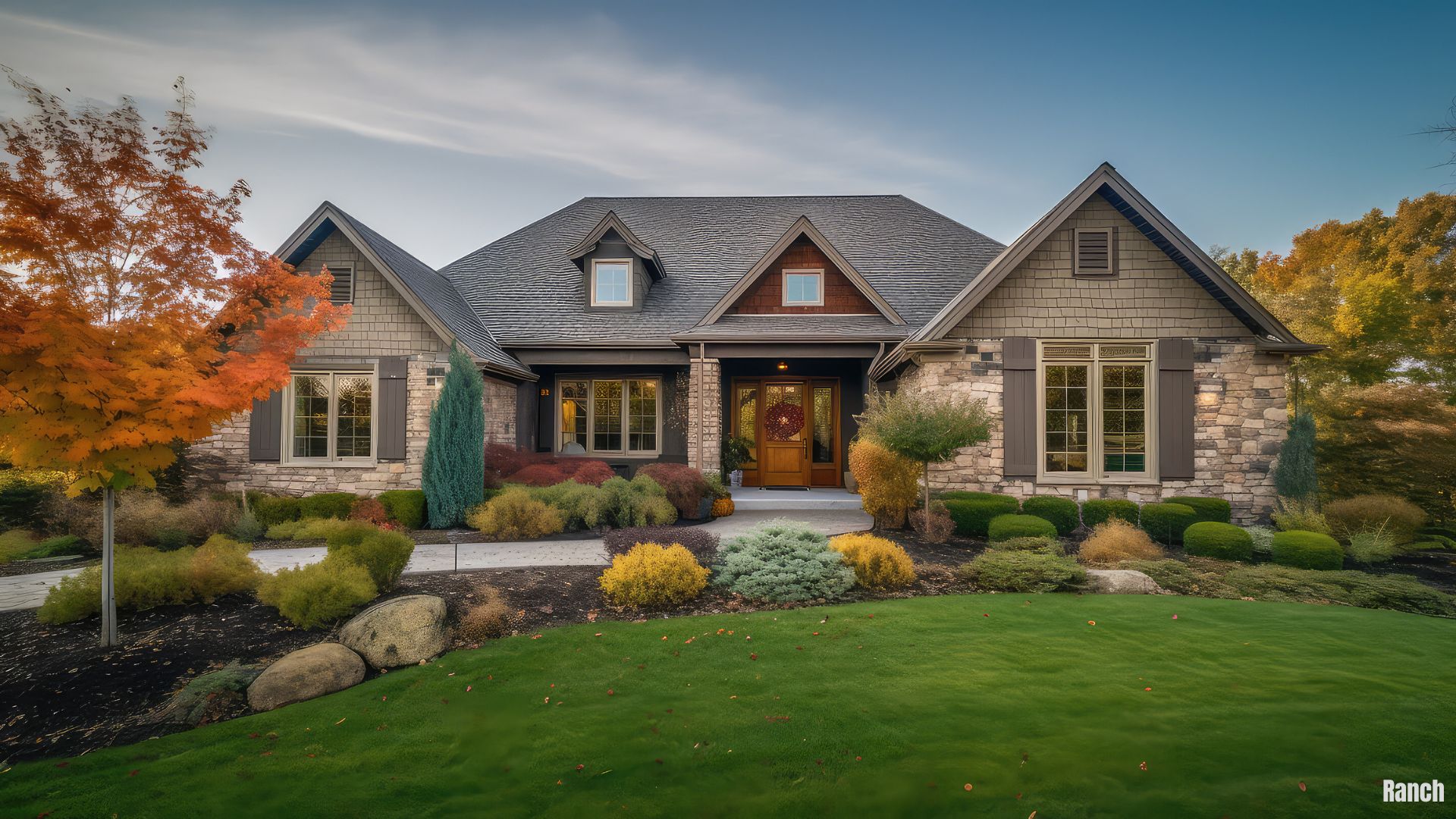Ever noticed how a home exterior can tell a story? Whether it's a cozy Cape Cod style with its welcoming shutters or a regal Tudor style with its unique charm, every home has its own tale.
The right landscaping, a neat walkway, or a freshly painted front door can make all the difference. It's not just about looking good; it's about making a statement.
So, whether you're thinking of selling or just want to be the talk of the neighborhood, let's dive in and explore how to boost your home's curb appeal with style-specific tips.
Cape Cod
Inspired by early colonial homes, Cape Cod homes are simple one or one-and-a-half-story cottages. If you're wondering how to add curb appeal to a Cape Cod, consider these enhancements to boost its charm:
Roof: Consider cedar shingles for a weathered look.
Pathway: A flagstone pathway can add a rustic touch.
Front Door: A brightly colored front door can be a welcoming touch.
Windows: Dormer windows not only add space but also enhance aesthetics.
Landscaping: Opt for hydrangeas, beach grass, and other plants native to the Northeast.
Neoclassical
Neoclassical homes, inspired by ancient Greece and Rome, stand out with tall columns and symmetrical shapes. Elevate their elegance by:
Landscaping: Opt for formal gardens with fountains and statues.
Columns: Maintain the tall, white columns for a stately appearance.
Entrance: An elaborate doorway with pilasters and a pediment is a must.
Pathway: A straight pathway lined with marble or granite complements the style.
Windows: Tall, narrow windows with decorative crowns enhance the classical look.
Ranch
Their long, low-profile, ranch-style homes are quintessential single-story dwellings. Boost their suburban appeal by:
Entrance: A recessed entrance or a prominent front stoop adds character.
Pathway: A winding pathway with rustic pavers complements the laid-back style.
Windows: Sliding glass doors and large windows connect the indoors with the outdoors.
Roof: Gabled roofs with wide eaves are typical. Consider clay tiles for a southwestern touch.
Tudor
The Tudor architectural style is reminiscent of medieval England, characterized by its steeply pitched roofs, decorative half-timbering, and tall, narrow windows.
If you're seeking insights on how to add curb appeal to a Tudor Revival house, here are some suggestions to elevate your curb appeal:
Lighting: Go for wrought iron or bronze lanterns to illuminate the pathway.
Front Door: Consider a rich wooden door with iron hardware to complement the style.
Landscaping: Opt for an English garden look with roses, lavender, and boxwood hedges.
Windows: Enhance the tall windows with decorative boxes filled with seasonal blooms.
Pathway: A cobblestone or brick pathway leading to the entrance can add a touch of authenticity.
Colonial
Colonial homes are known for their symmetry, brick or wood facades and gabled roofs. To boost their curb appeal:
Shutters: Add or repaint shutters contrastingly to the home's exterior.
Lighting: Brass or black lantern-style lights can add a touch of elegance.
Porch: Consider adding a small portico or a full-length porch with white columns.
Fencing: A picket fence painted in white can encapsulate the classic colonial charm.
Landscaping: Symmetrical plantings on either side of the front door can enhance the balanced look.
Craftsman
Craftsman homes are known for their handcrafted details, overhanging eaves, and exposed rafters. Boost their curb appeal by:
Color: Opt for earthy tones like greens, browns, and blues.
Lighting: Go for copper or bronze lanterns with a patina finish.
Porch: Emphasize the wide porch with wooden or stone columns.
Landscaping: Native plants and shrubs can complement the natural look.
Hardware: Update door handles, house numbers, and mailboxes to arts and crafts style.
Shingle
Shingle-style homes, often seen in coastal areas, are covered in wooden shingles and have a free-flowing design. Enhance their look by:
Windows: Bay windows or bow windows can add character.
Roof: Maintain the wooden shingles for a weathered gray look.
Pathway: A pathway with crushed shells can evoke a beachy feel.
Porch: Emphasize the wraparound porch with comfortable seating.
Landscaping: Coastal plants like sea grass and sandwort can thrive here.
Colonial Revival
Colonial Revival homes, reminiscent of early American architecture, are known for their symmetrical facades and brick or wood siding. Enhance their classic charm by:
Landscaping: Boxwood hedges and rose gardens complement the style.
Pathway: A brick or cobblestone pathway adds to the colonial ambiance.
Entrance: A grand entrance with a decorative pediment can be a focal point.
Roof: Opt for wooden shingles or red clay tiles to maintain the traditional look.
Windows: Symmetrical double-hung windows with shutters add to the authenticity.
Modern
Modern homes, known for their clean lines and functional design, prioritize open spaces. Accentuate their minimalist charm by:
Windows: Floor-to-ceiling windows emphasize the open concept.
Entrance: A bold, oversized door in a vibrant color can be a statement piece.
Roof: A flat or slightly pitched green or living roof option adds eco-friendliness.
Landscaping: Ornamental grasses and succulents offer a contemporary touch.
Pathway: Sleek, linear pathways using concrete or stone slabs fit the modern aesthetic.
Prairie
Prairie-style homes, reflecting the American Midwest's natural elements, are characterized by horizontal lines. Enhance their organic feel by:
Pathway: A flagstone pathway complements the earthy aesthetic.
Entrance: A low, wide entrance blends seamlessly with the home's design.
Windows: Horizontal bands of windows emphasize the style's linear design.
Landscaping: Native plants and wildflowers support the naturalistic approach.
Roof: Low-pitched roofs with broad eaves are a signature. Ensure they're in pristine condition.
Pueblo Revival
Pueblo Revival homes, inspired by the ancient Puebloan peoples, exude a Southwestern charm. Enhance their desert beauty by:
Roof: Flat roofs with protruding wooden beams (vigas) are iconic.
Landscaping: Cacti, yucca, and other desert plants are ideal choices.
Pathway: A pathway made of adobe or terracotta tiles adds warmth.
Entrance: A rounded entrance with heavy wooden doors is characteristic.
Windows: Deep-set windows with wooden lintels maintain the traditional look.
Art Deco
Art Deco homes, emerging in the Roaring Twenties, are all about bold geometric patterns and lavish ornamentation. Elevate their vintage glamour by:
Roof: Flat roofs with decorative parapets are a staple.
Entrance: A bold, geometric entrance with chrome or glass accents stands out.
Landscaping: Symmetrical gardens with sculpted shrubs and topiaries fit the era.
Pathway: Zigzag or chevron patterns in the pathway tiles capture the Art Deco spirit.
Windows: Streamlined windows with decorative ironwork or leaded glass enhance the style.
Final Thoughts
Every home, be it a quaint Cape Cod or a stately Tudor, has the potential to dazzle. You can elevate its allure with the right landscaping, a charming walkway, or a statement front door.
While mixing and matching styles is tempting, ensuring harmony in design is vital to keep the essence of your home's architectural style intact. A design expert can seamlessly guide you in merging styles if in doubt.
So, why wait? Embark on your home's transformation journey and let it shine as the neighborhood gem, reaping financial and personal rewards! (Related article: The End of Curb Appeal? Trends and Innovations in Home Design)




